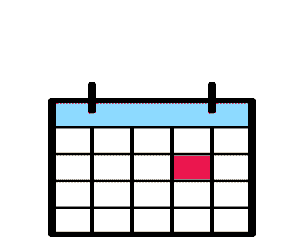Clearinghouses Under the Microscope: CorVel Corporation

Most claims administrators lack the technology to process electronic bills from providers. Instead, these claims administrators rely on clearinghouses. Since DaisyBill has direct access to all 5 California clearinghouses, we’re uniquely qualified to evaluate and compare the performances of each. With this series, we take a look at the value each clearinghouse adds to (or subtracts from) workers’ comp.
To kick this clearinghouse series off, we’ll start with the most efficient kind of clearinghouse: no clearinghouse at all.
Corvel Corporation is not a clearinghouse, per se. But CorVel is something even more important: a claims administrator that essentially functions as its own clearinghouse, directly accepting and processing providers’ electronic bills. This vastly reduces complications and potential friction for providers and employers, both of whom benefit from CorVel’s integrated approach.
We applaud any time a claims administrator’s practices make things simpler for all concerned. By taking on the duties of a clearinghouse, CorVel sets a new standard of efficiency.
Electronic Billing 101
Since 2012, California’s Division of Workers’ Compensation (DWC) requires employers, insurers, and their workers’ comp claims administrators to accept electronic bills from those providers that choose to electronic bill. The benefits of electronic billing are undeniable: faster payment, no chance of “losing” paper bills in the mail, and of course, environmental sustainability.
Compliant electronic billing comes down to three basic steps:
- The provider sends an electronic bill, known as an 837 file, and PDF supporting documents called 275 files to the claims administrator.
- Within 2 working days, the claims administrator returns the provider an electronic acknowledgment of receipt of the bill and supporting documents, known as a 277 file.
- Within 15 working days, the claims administrator sends the provider an electronic Explanation of Review (EOR), in the form of an 835 file.
Simple, right? But here’s the catch: most claims administrators are not technologically equipped to establish and maintain electronic connections with thousands of providers to accept and process providers’ electronic files (the 837 and 275 files). Also, these claims administrators cannot send electronic acknowledgments and EORs (277 and 835 files) back to providers.
That’s where clearinghouses come in.
How Clearinghouses Work
A clearinghouse functions as a central electronic hub, connecting the multitude of providers to the appropriate claims administrator. This allows the claims administrator to accept and manage electronic bills as mandated by California law.
A clearinghouse acts as the claims administrator’s agent, accepting providers’ electronic bills, converting them to whatever format the claims administrator requests, and sending the bills onto the claims administrator. When it’s time to acknowledge and respond, the clearinghouse furnishes the 277 and 835 files to send back to the provider.
In California, a claims administrator typically uses any one of five different clearinghouses. The DWC requires providers that bill electronically to establish a direct electronic route to the claims administrator's chosen clearinghouse. Crucially, sending electronic bills to the wrong clearinghouse is non-compliant and can preclude payment.
Despite this, unsuspecting providers believe they can send all bills to a single clearinghouse— often believing disingenuous assurances that a single clearinghouse can simply reroute bills to the correct destination.
As we’ve pointed out before, this indirect electronic billrouting through multiple clearinghouses is a recipe for disaster. The result is lost bills, delayed payment when bills are “dropped” to paper format, and possible denial of otherwise valid electronic billss on the grounds of incorrect routing.
Unfortunately, for providers who lack workers’ comp-specific electronic billing software, identifying the correct clearinghouse and establishing the required connections is an unmitigated hassle. For that reason, DaisyBill establishes and maintains the necessary direct electronic routes for all clearinghouses— making electronic billing as easy as it was meant to be for our clients.
Kudos to CorVel
CorVel takes a novel approach to the problem of clearinghouses: they don’t use one.
Corvel receives electronic bills directly from providers on behalf of the entities Corvel represents in its capacity as claims administrator. These include self-insured employers like El Pollo Loco, Eastman Kodak Company, and the County of Santa Barbara, among others.
Monthly, CorVel handles thousands of electronic bills from providers all over the state, without resorting to yet another middle person between the provider and the employer.
CorVel equipped itself with all the technology and know-how necessary to accept 837 files (the electronic bills) and 275 files (supporting docs) and compliantly return 277 acknowledgments and 835 EOR files. CorVel generates their own electronic Payor ID numbers for the insurers and employers Corvel represents, complete with payor-specific standardized claim number patterns.
This removes any question as to the bill destination which, as we pointed out earlier, is a real problem for clearinghouses.
For providers who can submit directly to Corvel*, it’s a boon: a direct electronic connection straight to the claims administrator, with no chance of losing the bill in the clearinghouse labyrinth. For their part, employers and insurers know that CorVel administers their electronic bills personally, without bringing other players into the picture to handle the claims that CorVel is paid to handle.
Instead of farming the work of processing electronic bills out to another party, CorVel simplified things.
From our perspective as a providers’ electronic billing agent, CorVel represents a wonderful possibility for the future of workers’ comp: one in which providers with good technology send bills to claims administrators with reciprocally good technology, and cut out wasteful intermediaries.
That good technology is here. While DaisyBill helps providers move forward, CorVel has stepped up on the payor end — and workers’ comp is better for it.
In the coming weeks, we’ll continue this series by taking a closer look at the 5 true clearinghouses in California, all of which DaisyBill works with. Providers and payors with any specific questions about these clearinghouses are welcome to contact DaisyBill.
*For providers who use just one clearinghouse to manage their bills, Corvel bills are usually mailed, since these clearinghouses do not have the technology to submit bills directly to Corvel with the correct payer identification to route the bill.
Let’s make workers’ comp billing easier, together. Sign up for a free demonstration of our Billing Software, which automatically generates compliant RFAs, electronic bills, and appeals. See how much better billing can be.
REQUEST DEMO
DaisyBill provides content as an insightful service to its readers and clients. It does not offer legal advice and cannot guarantee the accuracy or suitability of its content for a particular purpose.



.png)
.gif)